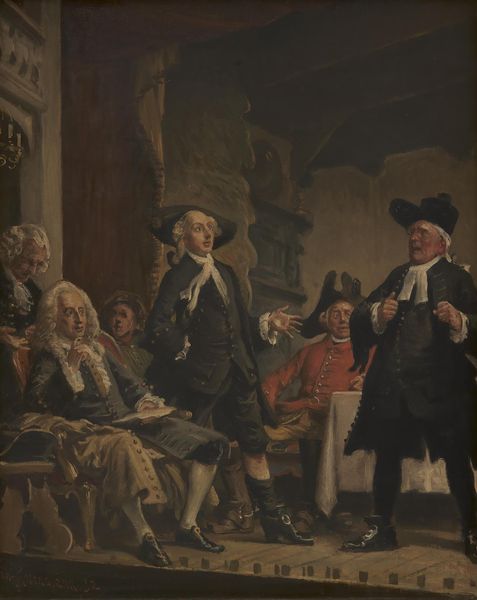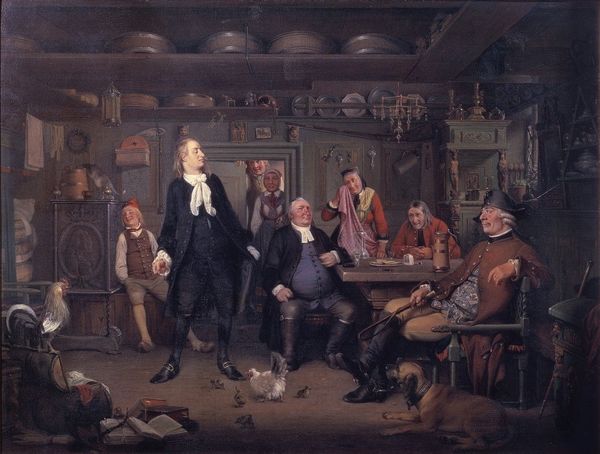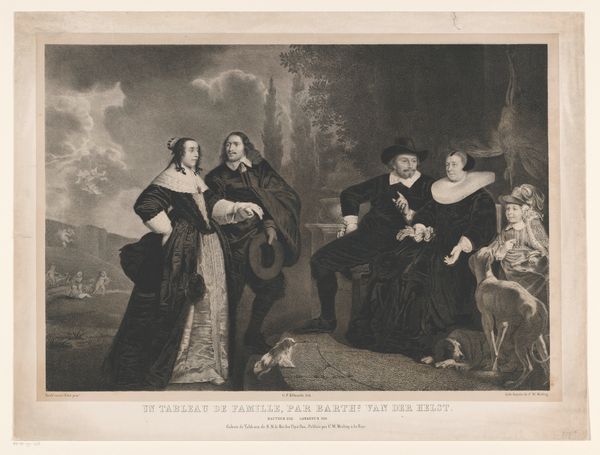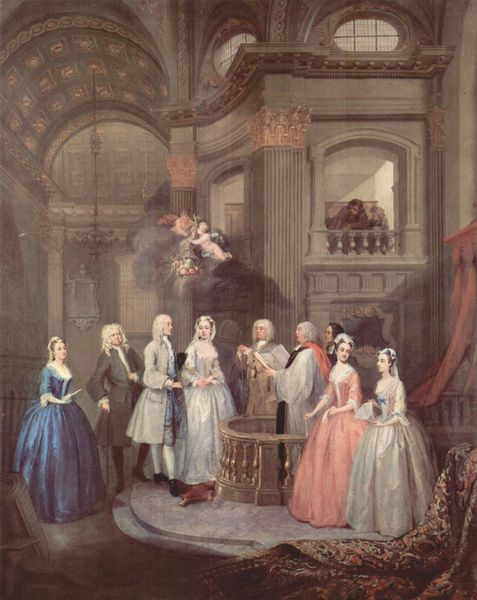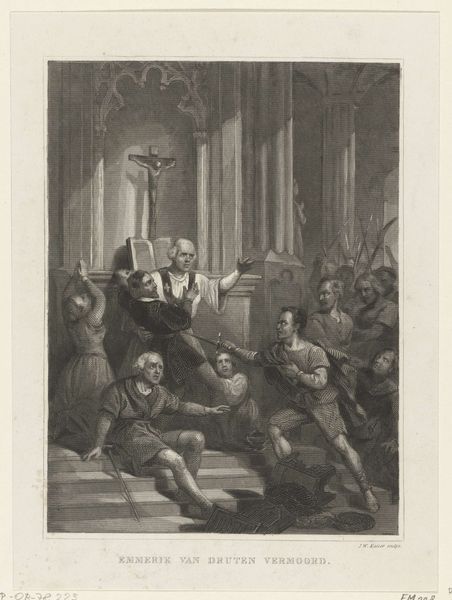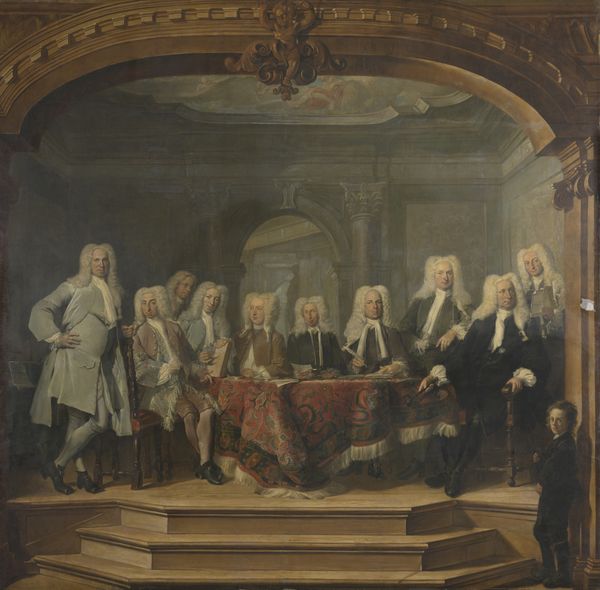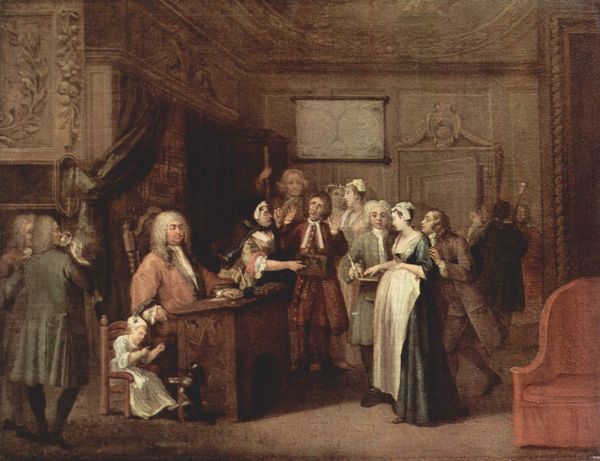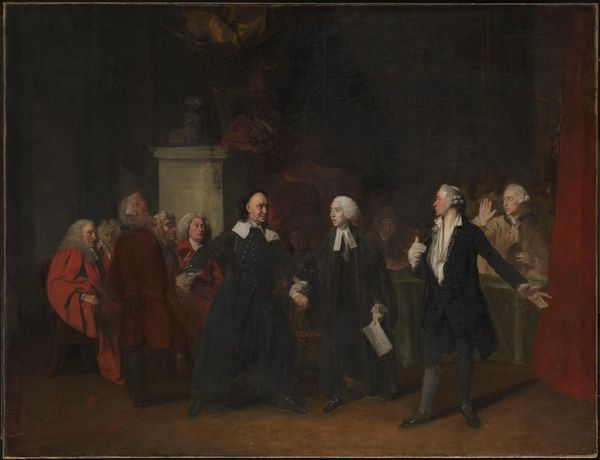
painting, oil-paint
#
portrait
#
allegories
#
allegory
#
baroque
#
painting
#
oil-paint
#
oil painting
#
genre-painting
#
history-painting
Dimensions: 53.5 x 44.5 cm
Copyright: Public domain
William Hogarth's “The Sleeping Church,” was painted with oils on canvas some time in the first half of the 18th century. Hogarth was not only a painter but also an engraver, and he often made prints after his paintings so they could be widely distributed and sold. The way this painting is made, using simple brushstrokes and earthy colors, gives it a sense of immediacy, like a quick sketch capturing a fleeting moment. But consider the social context: religion was a powerful force at this time, and Hogarth is critiquing the church's complacency. Look at the different figures, from the parson droning on in the pulpit to the sleeping congregants. It suggests a disconnect between the religious leaders and the people they're supposed to serve. Hogarth's choice of painting rather than printmaking for this work, suggests the painting was originally aimed at a wealthy clientele, and that he made prints after it, to reach a wider audience with his social commentary. So, the materials and making of this work are key to understanding its meaning and impact.
Comments
No comments
Be the first to comment and join the conversation on the ultimate creative platform.
